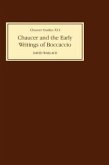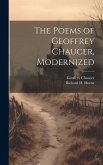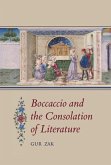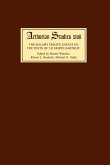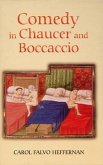AlthoughThe Decameron and The Canterbury Tales have often been linked, this is the first ever major study of the two most popular collections of medieval framed narratives to examine them both beyond shared general similarities and also to look at the search for individual analogue or source material, which has proved so inconclusive. Thus, the present study examines the texts and their internal dynamics primarily as a whole and reveals many surprising similarities which have hitherto remained unnoticed. The two collections are examined in the light of their literary diversity, their shape as a form of quodlibet debate, their discussion of literature and its autonomy using the oppositions of utile diletto and 'sentence' 'solaas', and the specific way that individual narratives are treated so as to create a labyrinthine web for the reader to both negotiate and enjoy.
Although the Decameron and the Canterbury Tales have often been linked, this is the first ever major study of the two most popular medieval collections of framed narratives to examine the texts as a whole. The present study goes well beyond shared general similarities and the inconclusive search for source or analogue material in order to look at the internal dynamics of each text and the surprising similarities that emerge there in terms of theories of literature, authority and authorship and the particular reader response envisaged by their authors. The two collections are examined in the light of their literary diversity, their shape as a form of quodlibet debate, their discussion of literature and its autonomy, using the oppositions of utile-diletto and 'sentence'-'solaas', and in the specific way that individual narratives are treated so as to create a labyrinthine web for the reader both to negotiate and to enjoy. This is the fullest attempt yet to demonstrate the weight of evidence linking Chaucer's work to the Decameron and to disprove the stance, take early this century, that Chaucer was not directly indebted to it.
Although the Decameron and the Canterbury Tales have often been linked, this is the first ever major study of the two most popular medieval collections of framed narratives to examine the texts as a whole. The present study goes well beyond shared general similarities and the inconclusive search for source or analogue material in order to look at the internal dynamics of each text and the surprising similarities that emerge there in terms of theories of literature, authority and authorship and the particular reader response envisaged by their authors. The two collections are examined in the light of their literary diversity, their shape as a form of quodlibet debate, their discussion of literature and its autonomy, using the oppositions of utile-diletto and 'sentence'-'solaas', and in the specific way that individual narratives are treated so as to create a labyrinthine web for the reader both to negotiate and to enjoy. This is the fullest attempt yet to demonstrate the weight of evidence linking Chaucer's work to the Decameron and to disprove the stance, take early this century, that Chaucer was not directly indebted to it.


